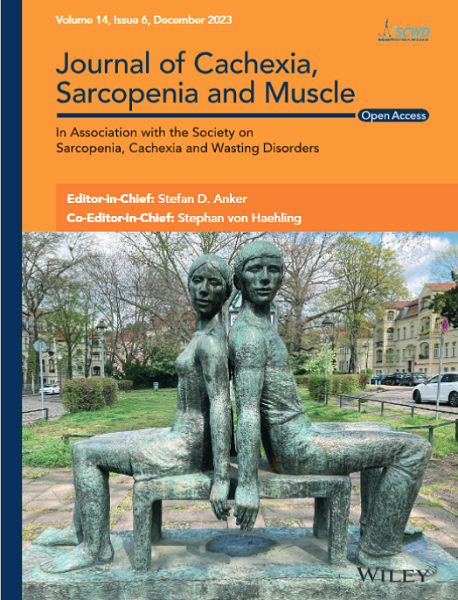Anabolic Sensitivity in Healthy, Lean, Older Men Is Associated With Higher Expression of Amino Acid Sensors and mTORC1 Activators Compared to Young
Abstract
Background
Sarcopenia is thought to be underlined by age-associated anabolic resistance and dysregulation of intracellular signalling pathways. However, it is unclear whether these phenomena are driven by ageing per se or other confounding factors.
Methods
Lean and healthy young (n = 10, 22 ± 3 years, BMI; 23.4 ± 0.8 kg/m2) and old men (n = 10, 70 ± 3 years, BMI; 22.7 ± 1.3 kg/m2) performed unilateral resistance exercise followed by intake of essential amino acids (EAA). Muscle biopsies were collected from the rested and the exercised leg before, immediately after and 60 and 180 min after EAA intake. Muscle samples were analysed for amino acid concentrations, muscle protein synthesis (MPS) and associated anabolic signalling.
Results
Following exercise, peak plasma levels of EAA and leucine were similar between groups, but the area under the curve was ~11% and ~28% lower in Young (p < 0.01). Absolute levels of muscle EAA and leucine peaked 60 min after exercise, with ~15 and ~21% higher concentrations in the exercising leg (p < 0.01) but with no difference between groups. MPS increased in both the resting (~0.035%·h−1 to 0.056%·h−1, p < 0.05) and exercising leg (~0.035%·h−1 to 0.083%·h−1, p < 0.05) with no difference between groups. Phosphorylation of S6K1Thr389 increased to a similar extent in the exercising leg in both groups but was 2.8-fold higher in the resting leg of Old at the 60 min timepoint (p < 0.001). Phosphorylation of 4E-BP1Ser65 increased following EAA intake and exercise, but differences between legs were statistically different only at 180 min (p < 0.001). However, phosphorylation of this site was on average 78% greater across all timepoints in Old (p < 0.01). Phosphorylation of eEF2Thr56 was reduced (~66% and 39%) in the exercising leg at both timepoints after EAA intake and exercise, with no group differences (p < 0.05). However, phosphorylation at this site was reduced by ~27% also in the resting leg at 60 min, an effect that was only seen in Old (p < 0.01). Total levels of Rheb (~45%), LAT1 (~31%) and Rag B (~31%) were higher in Old (p < 0.001).
Conclusion
Lean and healthy old men do not manifest AR as evidenced by potent increases in MPS and mTORC1 signalling following EAA intake and exercise. Maintained anabolic sensitivity with age appears to be a function of a compensatory increase in basal levels of proteins involved in anabolic signalling. Therefore, our results suggest that age per se does not appear to cause AR in human skeletal muscle.


 求助内容:
求助内容: 应助结果提醒方式:
应助结果提醒方式:


